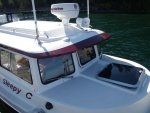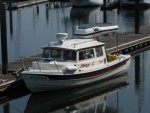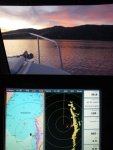This has been a fun discussion. I agree with rogerbum wholeheartedly with the exception that when crossing the strait I generally run with the radar at 12 mile so it correlates with my AIS received targets. Once inside the islands, it comes down to 4-6 or less depending on the place.
One thing to remember is that IF you have radar, or any other navigational accessory (and I believe the USCG quantifies radar as a NavAid) it should be deployed at all times.
I have seen, birds (and clumps), kayaks, mooring floats, daymarks, docks, and a myriad of boats with mine, (7 year old Raymarine C120) and it has worked, always. For MARPA, the AIS is much faster, with more info. Both devices supplement the other, and I run them if the props are spinning.
Funny, driving last week in rather thick fog, I was wishing for radar in my car.
If you have it use it, If you don't, then be careful because either you shouldn't be in some places at some times, or you may get interested.
Harvey
SleepyC :moon

One thing to remember is that IF you have radar, or any other navigational accessory (and I believe the USCG quantifies radar as a NavAid) it should be deployed at all times.
I have seen, birds (and clumps), kayaks, mooring floats, daymarks, docks, and a myriad of boats with mine, (7 year old Raymarine C120) and it has worked, always. For MARPA, the AIS is much faster, with more info. Both devices supplement the other, and I run them if the props are spinning.
Funny, driving last week in rather thick fog, I was wishing for radar in my car.
If you have it use it, If you don't, then be careful because either you shouldn't be in some places at some times, or you may get interested.
Harvey
SleepyC :moon



